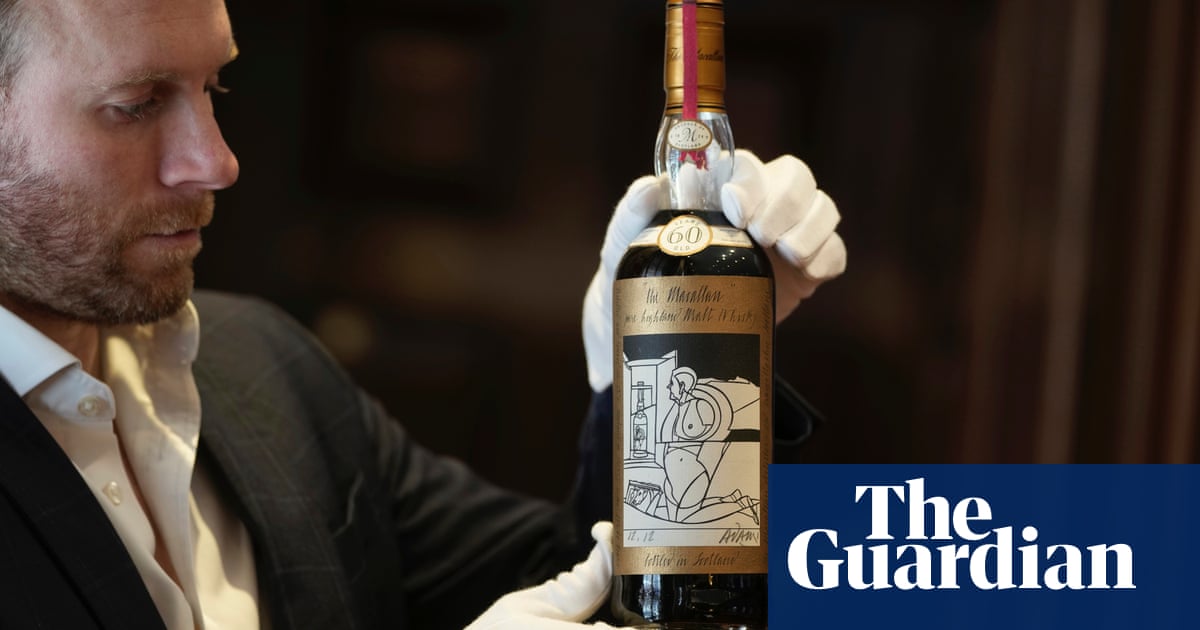
Last month, a Reddit member posted on the popular forum “Am I The Asshole?” to report a falling out with her 14-year-old niece, whom she was refusing to ever see again, and had told to burn in hell. The niece’s crime: plant theft.
The Redditor had gone away for a fortnight, and asked her niece to plant-sit her prized collection of 35 tropical indoor plants. As payment, she’d give the niece some cuttings to grow her own. She returned to the scene of a botanical bloodbath. Everything in a pot had been given a drastic haircut; some were half the plants they used to be. Her ‘Cebu Blue’ Pothos, her String of Pearls, her Ruby Necklace, her ‘Silver Stripe’ Philodendron, the Golden Pothos she’d trained up her stairwell… all decimated. The niece had taken her cuttings in advance – and hadn’t spared the secateurs.
Worse, though, were the jewels of her collection: a ‘Pink Princess’ Philodendron that had been reduced to two leaves, and a Monstera ‘Albo’, which now had just three.
The Redditor broke down, wept, raged and screamed at her niece – who had already sold most of the cuttings. To an outside observer, the answer was obvious: Of course, the Redditor was the asshole. Her niece was 14. It was an honest mistake. They were just plants.
But the green-fingered commentators knew something different: the niece had been caught red-handed. Several of those plants were worth hundreds of pounds. In the case of the Monstera Albo, an Instagram-friendly “It” plant that has skyrocketed in value over the past two years as much as any cryptocurrency, a cutting alone can go for thousands. This was no mix-up. This was a heist.
Consult a lawyer, the commentators said. Press charges. “Hell would be too good a place,” wrote one.
They voted. Not the asshole.
People have been pilfering plants as long as they’ve been growing. Victorian botanist adventurers fuelled a 19th-century plant-race across the globe as exotic gardens became high-society status symbols back home.
But now, Brexit, the pandemic and social media have combined for a perfect storm. As garden centres closed in 2020, Dutch growers – who produce indoor plants in vast hi-tech greenhouses – shut down production, causing a worldwide shortage. At the same time, demand for indoor plants went through the roof. Brexit has pushed prices up, while the energy crisis looks set to send them higher still.
It’ll likely only add to the allure. On Instagram, showing off a rare or prized species has a name: “plant flexing”. Rare plants that sold for under £100 two or three years ago now sell in online auctions for thousands. Last summer, a New Zealand seller made headlines when a small eight-leaf pot plant – a Rhaphidophora tetrasperma, also known as Mini Monstera – sold for £14,000. Newspapers described the sale as “record-breaking”, but several in the plant world told me they’ve witnessed sales for double that.
“I’ve heard from growers I really respect that they were asking upwards of $40,000 for some of their varieties,” says Tyler Thrasher, a US plant propagator who is the host of the popular podcast Greenhouse Rants. “It’s usually because those plants will end up in a tissue culture lab where they can be turned into millions in a couple of years.”
Like most precious objects, the value of any given plant is derived from its scarcity. In the case of one of the most-prized – the Monstera Albo – it’s down to unique white markings on the leaves, known as its variegation. The odds of a regular Monstera (also known as the Swiss Cheese plant, which you can pick up in Ikea for £19) developing variegation from seed are roughly 100,000 to 1. (This doesn’t stop people from selling “Variegated Monstera seeds”, however, aka the magic beans of the plant world.)
The most Instagram-friendly plants – those boasting “half-moon” leaves split between pure green and snow white – regularly sell for £10,000 or more on eBay, Etsy and Facebook Marketplace, while their cuttings, the only reliable way to grow a Monstera Albo of your own, sell for hundreds or even thousands. (There’s still risk here: even cuttings from a variegated mother plant will sometimes revert to the all-green leaves that nature intended.)
It’s a houseplant bubble that has seen the growth of those most human of off-shoots: plant speculation, plant swindling and outright plant crime. Pot plant collections have been raided at gunpoint. Botanical gardens have been trimmed at scissor-point. Some unscrupulous sellers have even taken to painting the leaves white.
Thrasher first noticed the shift when he saw that people had taken to selling “nodes” – just an inch or so of stem with a growth point – rather than full cuttings, in order to maximise profits. These “wet sticks”, as he dismissively coined them in a podcast, now sell for anything from £50 to a few hundred pounds. Yet the odds of growing a plant from them are significantly reduced compared to full cuttings. Regardless, the practice has become so popular it’s even spawned a T-shirt line: “Send nodes”.
“You’re selling a piece that could potentially form a new plant,” says Thrasher, “with a lot of emphasis on potentially. But people can’t afford a fully grown plant when it costs $3,000. So if someone’s like, ‘Hey, I’ve got a node for $200,’ people are willing to take the gamble.” (Thrasher’s podcast rant backfired: the term “wet sticks” became the brand name for nodes, and are now proudly sold as such.)
Talk to online plant sellers and they’ll tell you the sale of nodes was just the start. Some sellers advertise pieces of stem without even a growth point – a true “wet stick” – which has no potential to be a plant. (“But they photograph them in a way that looks like it has,” says Grace Morris, who runs the Etsy store GracesHouseOfPlants). Most buyers, it is pointed out to me, will assume it was their fault the plant didn’t grow – or only realise long after PayPal’s 20-day dispute window they’ve been scammed. The perfect crime.
I speak to Jimmy Rideout of Etsy store JimLovesPlants, who gives me a list of scams: wanton plant mislabelling (“When it’s obvious the plant in the picture is not the one they’re saying”); size scamming (“Where the scale isn’t in the picture and you get it and it’s a lot smaller than it should be”); cutting fraud (“I’ve seen someone selling a Golden Pothos cutting for £400 saying it was taken from a rare Variegated Monstera, but you can get a Pothos for £5 from B&Q”); even eBay listings that say they’re not selling the expensive-looking full Variegated Monstera in the picture.
Hold on, I say. What are they selling then?
“That’s just it – they’re selling nothing. The listing says, ‘I’m not actually selling this plant, I don’t have this plant,’ and it’s like £450. They’re just hoping someone will click buy without reading the description.”
Most brazen, though, was the Facebook seller who claimed to have a “Calathea Makoyana Pink Diamond”, a new variation of a standard Peacock Plant, “without a registered name”, and which boasted never-before-seen white variegation around its leaves. It didn’t take long for retired amateur plant sleuth Robert McCracken to get to the bottom of it: “I have never seen nature produce a margin like that,” he wrote in the comments, “but I have seen a house painter leave that exact dabbling on window panes.”
In a frenzied market where the right Instagram shot can see a species go viral and become the new It plant overnight, there’s money to be made if you can convincingly claim to have made a new discovery.
Case in point: the “Philodendron Pink Congo”, which briefly took the world of plantfluencers by storm in 2019. It was claimed to be a variant of the Philodendron Pink Princess, itself a highly sought-after plant that boasts patches of pink variegation on its leaves. The new plant didn’t just have patches, though – half of its leaves were pure millennial pink. It was precision-tooled for Instagram and became an instant sensation, selling online for hundreds… At least, until owners started noticing something odd: the bright pink leaves started fading to a softer shade, then to yellow, then, horror, green. What was happening?
McCracken – rapidly establishing himself as the Batman of everything potted – was on the case. “As soon as I saw it,” he tells me, “I knew it was not a thing of nature.”
His research led him to an Indonesian webpage (McCracken speaks some of the language) that detailed the process of artificially pinkening the leaves of philodendrons by gassing them with a chemical that stimulates ethylene production, the hormone that ripens bananas and turns green tomatoes red. It wasn’t a scam, exactly – the technique was used for weddings and events – but it certainly wasn’t a new species.
McCracken’s Facebook post on the subject went viral and demand tanked almost instantly. “A friend told me that on the day of my post she lost 200 orders. For Indonesia, it was a multimillion dollar collapse.”
Still, it proved one thing: for the right plant, enthusiasts would buy first and ask questions later. Just last year, budding plant entrepreneurs claimed to have successfully crossed a Spiritus Sancti, an incredibly rare and valuable aroid from Brazil, of which more now exist in cultivation than the wild, with a Jose Buono, a philodendron with stable white variegation (ie, it could be grown from seed). If true, it was a revelation: the holy grail of houseplants would now boast variegated leaves. The dream!
Pictures of saplings were posted in a Facebook plant group and people handed over $1,200 for each one. Yet as each grew, with owners posting online updates, they simply looked like Jose Buonos – not a Spiritus Sancti hybrid at all.
“And the prices kept dropping as they got larger,” Kristina St Claire, a Florida plant enthusiast who watched it unfold, told me. When she noticed a Florida Etsy seller, Aaron Gibbs of Urban Leaf Shop, begin to sell them, she voiced her concerns, and Gibbs got the plant DNA-tested. The results came back. It was… a Jose Buono.
“It was like the Jerry Springer show,” says Thrasher, “and you had all these people posting saying, ‘I spent $1,200 on this!’ But everyone had just been like, I want this hybrid. People thought they could grow it, cut it, sell it in their plant shop. It’s like whenever you hear about cryptocurrency and there’s a new coin, everyone’s trying to get in early.”
For Thrasher, cryptocurrency is the most apt analogy of the current plant bubble. He’s known people to take out loans of up to $45,000, “buying up one of everything”, with the hope of making a fortune. “It’s speculation. But I can’t tell you how many people I’ve seen, a year later, selling scraps of plants, saying, ‘I got in over my head.’”
And like crypto, lack of regulation is key. For serious collectors, trades take place not through eBay or Etsy, but via members-only tropical plant groups on Facebook. While writing this story I tried to join several of them: to be accepted, each required me to approve a long list of terms and conditions. The most common was “No price shaming”, meaning no expressing incredulity at a plant’s astronomical cost (“This includes LAUGHING emotes,” read one).
There are even groups, St Claire tells me, dedicated to “proplifting” – the practice of stealing cuttings from nurseries and botanical gardens. “It’s a huge problem for botanical gardens,” she says. “People steal all the time – and these people are really proud of it. They don’t see it as stealing. But it can be thousands of dollars.”
She refuses, she says, to let people purchasing plants from her pick them up in person. Living in Florida, many of her tropical plants grow outdoors and she worries they might be casing the joint.
I later speak to Dr Carly Cowell from the Royal Botanic Gardens at Kew. Has she noticed any proplifting?
“Yes, we get pots taken, people take plants out of the displays. And it’s really hard to track cuttings.” After all, plants now worth fortunes are on open display. “In previous years, growers haven’t been able to sell all of their stock. Now they’re retiring on one plant.”
Yet Cowell worries more about the unchecked international plant trade the current frenzy is encouraging. At Kew, they have strict photo-sanitary controls and quarantine procedures to ensure harmful diseases aren’t spread through our horticultural or agricultural industries. “That’s a big problem with internet trade. It could be coming from anywhere. And it can decimate nurseries. I’ve seen diseases where the plants are fine in the morning, but by the evening they’re all dead.”
In the case of the much-prized Monstera Albo, several sellers told me they had seen regular Monsteras sold as Albos, with patches of light colour on the leaves, but which were actually plants infected with the mosaic virus.
Last year, working with UK Border Force, Kew set up FloraGuard, which aims to track illegal plant trade by using AI algorithms to search the internet for chatter: “It would search for words like wetstick, but also specific species.” Yet Facebook, she says, wouldn’t allow the algorithm to penetrate their private groups, meaning, for now at least, those traders remain shielded from Kew’s prying eyes.
Finally, I spoke to Kaylee Ellen, a plant YouTuber who has been at the vanguard of the fight against all manner of botanical deception, with videos exposing the Pink Congo scandal and others attracting hundreds of thousands of views. And there has been a price to pay. Her email has been signed to all manner of mailing lists, presumably by disgruntled sellers, “signing me up for the RSPCA, abortion clinics, suicide prevention, religious groups, drug-related stuff… places that sell fake plants, like ha, very funny…” Someone has even been posting comments posing as her on various forums, meaning she’ll get regular emails from upset people, and will have to reply, “You’re gonna have to believe that it wasn’t me.”
Still, she’s not about to back down. Not while plant crime still stalks the sills. Even the infamous Pink Congo, she’s noticed, is making a comeback. Directly after McCracken’s exposé, most sellers still selling them did so with a disclaimer that the pink colouring wouldn’t last. But now, “the disclaimers have kind of vanished”.
As she said in one of her videos, talking for the plant community as much as herself: “We just need to look out for each other.”












